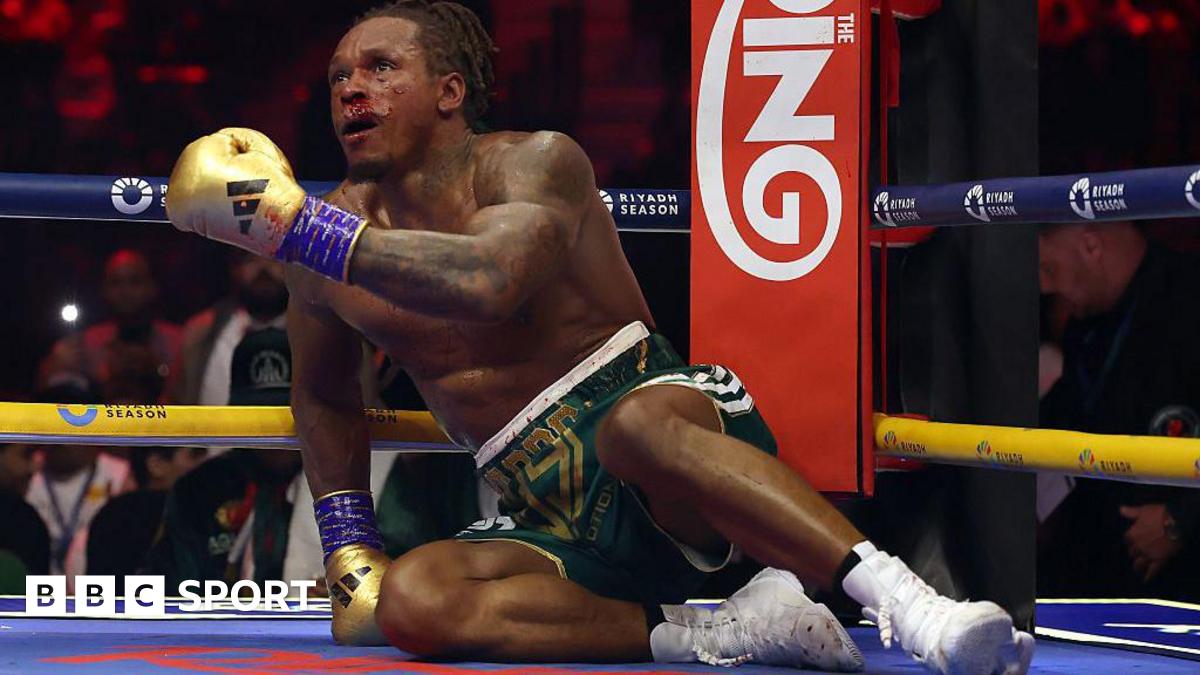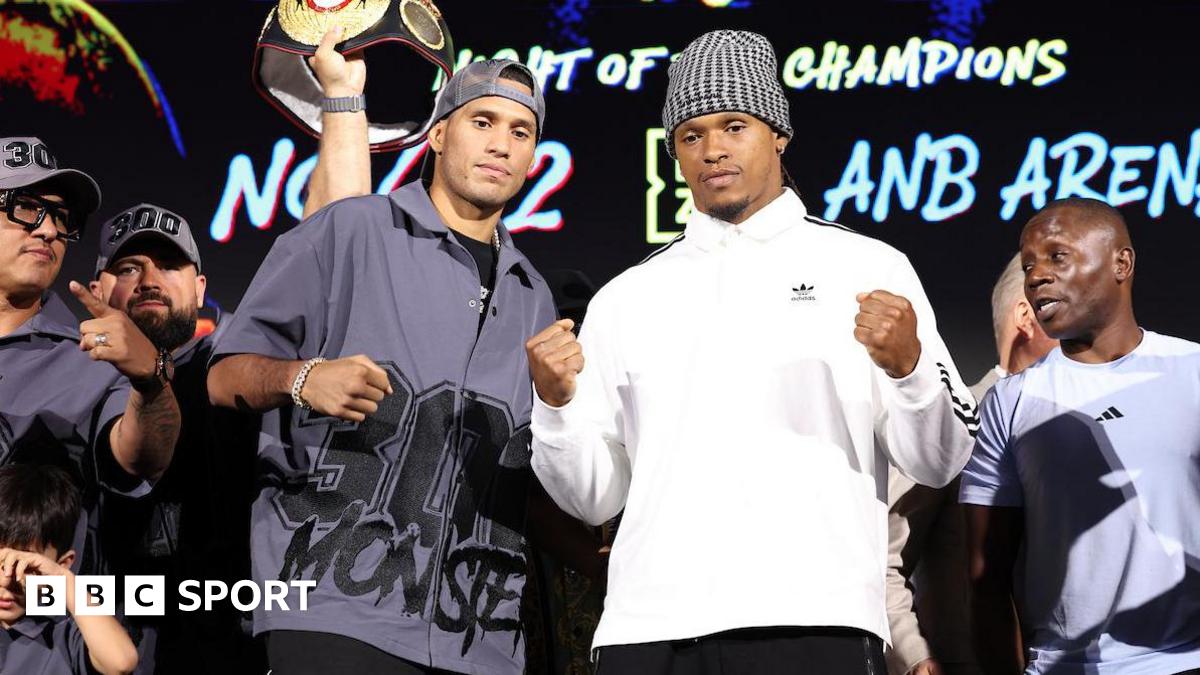Benavidez vs Yarde: Bloodied Briton stopped in seventh of world-title challenge
British light-heavyweight Anthony Yarde’s third shot at a world title ended in heartbreak again after a systematic beat-down by WBC champion David Benavidez in Saudi Arabia.
After a slow start, American Benavidez seized control, sending 34-year-old Yarde to the canvas with a barrage in the seventh.
With blood streaming from Yarde’s nose and smeared across the canvas, another heavy flurry of punches with a minute left in the round forced the referee to halt the contest.
“I stuck in there. I’m a fighter,” Yarde told BBC Radio 5 Live.
“I felt like it was competitive. I know how he comes with good pressure. I was boxing, boxing, thinking middle rounds, the dog rounds, we would exchange.
“He has quick hands, caught me first and hit me with a good shot on the nose. When I took a knee and he hit me when I was down, I was dizzy after that.”
Benavidez was deducted two points for punches while Yarde was down, but the outcome was already inevitable.
The Londoner – having previously lost in world championship bouts to Sergey Kovalev in 2019 and Artur Beterbiev in 2022 – may now have to accept the possibility that a world title might elude him.
Benavidez, 28, remains unbeaten and extends his record to a formidable 25 knockouts in 31 wins.
After the fight, Benavidez – of Mexican heritage – revealed he plans to move up to cruiserweight to challenge Mexico’s Gilberto Ramirez for the WBA and WBO cruiserweight titles on 2 May, aiming to become a three-weight world champion.


